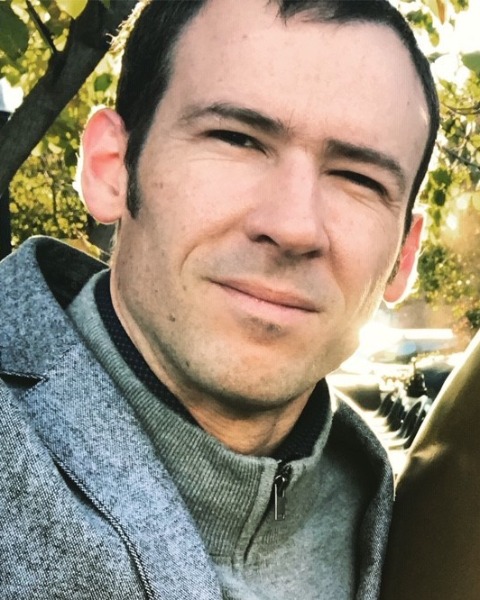ACE 2025
CLIM
Climate Policy, Issues, and Corporate Programs
Decarbonizing the Global Economy - How Can the Environmental Remediation Industry Contribute?
Thursday, June 12, 2025
2:20pm – 2:40pm ET
Location: 306C

François Beaudoin, P.Eng., PMP
Business Groupe Leader
GHD Consultants Ltd, QC, Canada- ML
Marie-Joëlle Lainé
QC, Canada
Author(s)
Co-Author(s)
Abstract Description: The remediation industry worldwide is a 100+ billion-dollar business, active in every sector of the economy. In the early 2000s, this industry began a paradigm shift towards an integration of sustainability principles. But this change in practice was mostly self-driven, and often faced resistance from clients and regulators. The current global focus on sustainability and climate change promises to change this. Almost every large private company and public entity now has a decarbonation objective, and is seeking nature positive and corporate social responsibility (CSR) initiatives to demonstrate its commitment to addressing social and environmental impacts.
More specifically, in order to meet their 2030 or 2050 decarbonization targets, companies are looking at a myriad of ways they can reduce their environmental footprint: energy efficiency, shift to renewal energy, fleet decarbonization, sustainable procurement practices, waste reuse, etc. If a company is not able to identify and leverage sufficient reduction opportunities, they will need to purchase credits, the price of which is increasing every year.
The first step in a decarbonization journey is to produce a robust baseline. In order to report on its GHG emissions, an emitter must quantity it’s direct (scope 1 and 2), and indirect (scope 3) emissions using recognized standards. Although only scopes 1 and 2 are typically regulated for large emitters, it is generally recognized that indirect emissions make up most of the carbon footprint. Scope 3 quantification is the more effort intensive of the three, and depends heavily on the quantity and quality of the available data. Once an accurate baseline is obtained, reduction opportunities can be identified and selected, usually based on criteria such as: cost/reduction ratio, co-benefits, associated risks and implementation schedule.
Remediation practitioners are well positioned to become key partners to support these decarbonation journeys, by leveraging their sustainable remediation expertise to bring desperately needed solutions to help meet these ambitious targets. Whether it is a mine reclamation, legacy industrial site closure, operation and maintenance of systems, or excess soil management as part of construction work, remediation consultants and contractors have their role to play. Moreover, many of the tools and methods which were developed and implemented can be transferred to non-remediation activities.
This presentation will present the general methodology for GHG quantification and reduction, and the various ways by which remediation practitioners can support decarbonization efforts. Finally, a case study of an ongoing decarbonization project for a Canadian federal entity will be presented.
More specifically, in order to meet their 2030 or 2050 decarbonization targets, companies are looking at a myriad of ways they can reduce their environmental footprint: energy efficiency, shift to renewal energy, fleet decarbonization, sustainable procurement practices, waste reuse, etc. If a company is not able to identify and leverage sufficient reduction opportunities, they will need to purchase credits, the price of which is increasing every year.
The first step in a decarbonization journey is to produce a robust baseline. In order to report on its GHG emissions, an emitter must quantity it’s direct (scope 1 and 2), and indirect (scope 3) emissions using recognized standards. Although only scopes 1 and 2 are typically regulated for large emitters, it is generally recognized that indirect emissions make up most of the carbon footprint. Scope 3 quantification is the more effort intensive of the three, and depends heavily on the quantity and quality of the available data. Once an accurate baseline is obtained, reduction opportunities can be identified and selected, usually based on criteria such as: cost/reduction ratio, co-benefits, associated risks and implementation schedule.
Remediation practitioners are well positioned to become key partners to support these decarbonation journeys, by leveraging their sustainable remediation expertise to bring desperately needed solutions to help meet these ambitious targets. Whether it is a mine reclamation, legacy industrial site closure, operation and maintenance of systems, or excess soil management as part of construction work, remediation consultants and contractors have their role to play. Moreover, many of the tools and methods which were developed and implemented can be transferred to non-remediation activities.
This presentation will present the general methodology for GHG quantification and reduction, and the various ways by which remediation practitioners can support decarbonization efforts. Finally, a case study of an ongoing decarbonization project for a Canadian federal entity will be presented.

